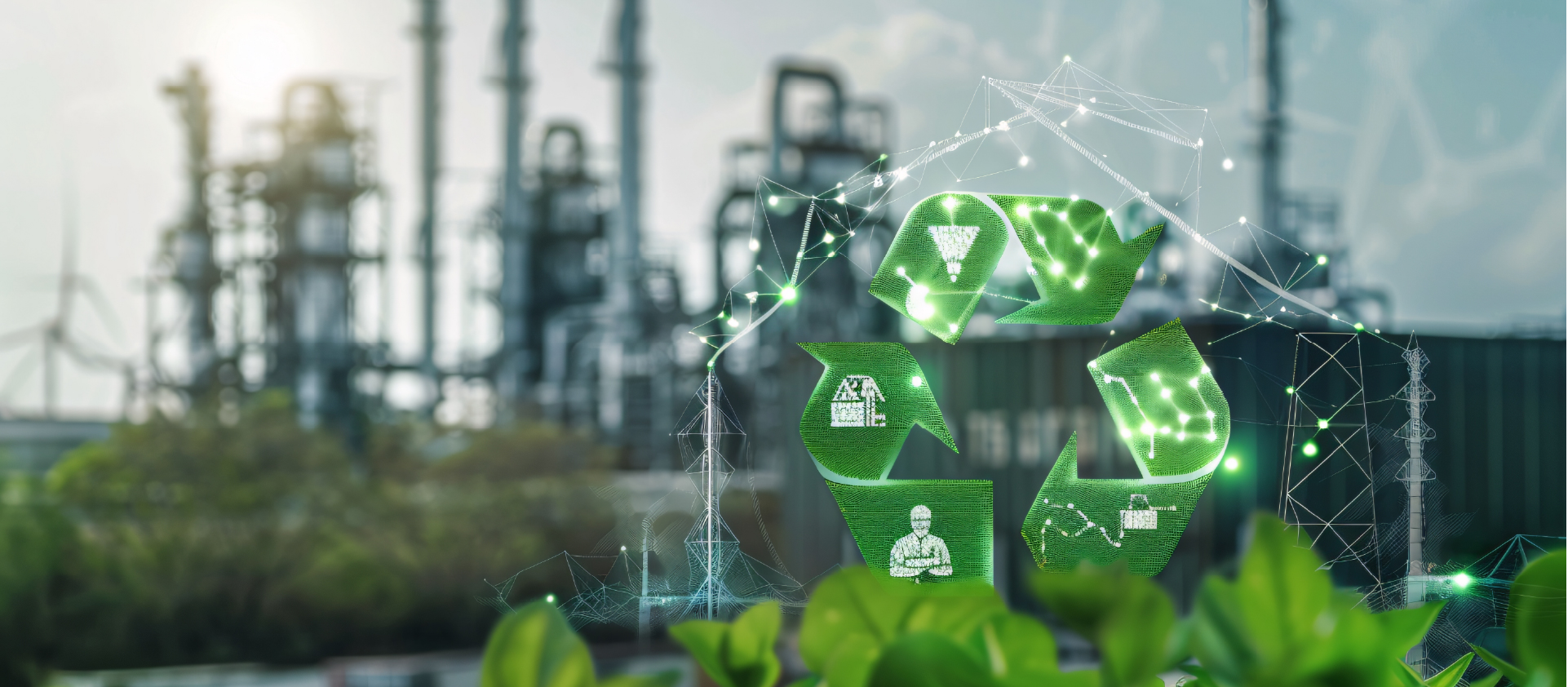PT. Gunung Raja Paksi Tbk

Understanding Low Carbon
Low Carbon Emission
In Steel Industry
Low Carbon Emission steelmaking focuses on minimizing the release of carbon dioxide and reducing the environmental impact typically associated with traditional steel production. This approach prioritizes the use of renewable energy sources, such as wind or solar power, over fossil fuels.
Key Elements of Low Carbon Steel Production:
- Carbon Reduction or Neutrality: These methods aim to significantly cut down carbon emissions by either using renewable energy to power conventional processes (like those in blast furnaces) or by adopting alternative production techniques that naturally generate fewer carbon emissions.
- Hydrogen as a Reducing Agent: One promising innovation involves replacing carbon-based materials (such as coke) with hydrogen in the reduction process. Unlike traditional methods, which release CO2, hydrogen-based processes produce water vapor as the byproduct, greatly reducing carbon emissions.
- Recycling and Circular Economy Practices:Increasing the use of recycled steel scrap is another key component of low-carbon steelmaking. By using more scrap, the demand for raw materials like iron ore decreases, resulting in reduced energy consumption and environmental impact.
- Advancements in Technology: Cutting-edge innovations in materials science and steelmaking technologies are essential to achieving more sustainable steel production. These technological improvements contribute to the development of environmentally friendly production methods.
- Standards and Certification: There are ongoing efforts to establish and implement certification schemes for low-carbon steel, ensuring transparency and credibility in sustainability claims across the industry.

Integrated Production Flow

of using EAF

The use of Electric Arc Furnaces (EAFs) in the steelmaking industry brings multiple benefits, particularly in terms of reducing carbon emissions and minimizing environmental impacts.
- Lower Carbon Emissions: EAFs are recognized for being more eco-friendly than traditional blast furnaces. They primarily use scrap steel as their input, decreasing the demand for virgin iron ore and coke—key sources of carbon dioxide in conventional steelmaking. By recycling scrap metal, EAFs support a circular economy through material reuse.
- Energy Efficiency: Compared to blast furnaces, EAFs consume less energy overall. They utilize electricity to generate the necessary heat for steel production, which can be sourced from renewable or low-carbon power sources. This is in contrast to the coal-fueled blast furnaces, which are energy-intensive and emit higher levels of greenhouse gases.
- Flexibility in Production: EAFs offer greater operational flexibility, allowing for rapid adjustments to production schedules and demands. They can be easily powered up or down, making them ideal for producing small steel batches or specialized alloys. This adaptability leads to more efficient manufacturing and reduced production waste.
- Lower Air Pollutants: EAFs produce fewer emissions of harmful air pollutants, such as sulfur oxides and nitrogen oxides, compared to blast furnaces. Since the electric arc process involves fewer chemical reactions with atmospheric gases, it results in cleaner emissions and contributes to better air quality.
- Technological Innovations: Ongoing advancements in EAF technology—such as improvements in process controls and optimization software—have enhanced efficiency and environmental performance. These innovations help the steel industry meet evolving sustainability standards and environmental regulations.
In summary, EAFs not only contribute to reducing carbon emissions and the environmental footprint of steel production but also improve operational efficiency and flexibility, supporting more sustainable industrial practices.
RESOURCES & SPECS
We are dedicated to collaborating with our partners to reduce emissions, conserve energy, minimize pollution, and deliver environmental training more effectively. Our Environmental Management System (EMS) is independently certified to meet ISO 14001:2015 standards.
CERTIFIED FACILITIES
Our goal is for our GRP operation to maintain ISO 14001:2015 certification for its Environmental Management System (EMS). This certification is granted through a third-party audit by an accredited registrar. The following GRP Divisions are certified. View List
ENVIRONMENTAL PRODUCT DECLARATIONS
What is the environmental impact of a product throughout the whole lifecycle? Visit the Certifications page to access GRP’s environmental product declarations.








